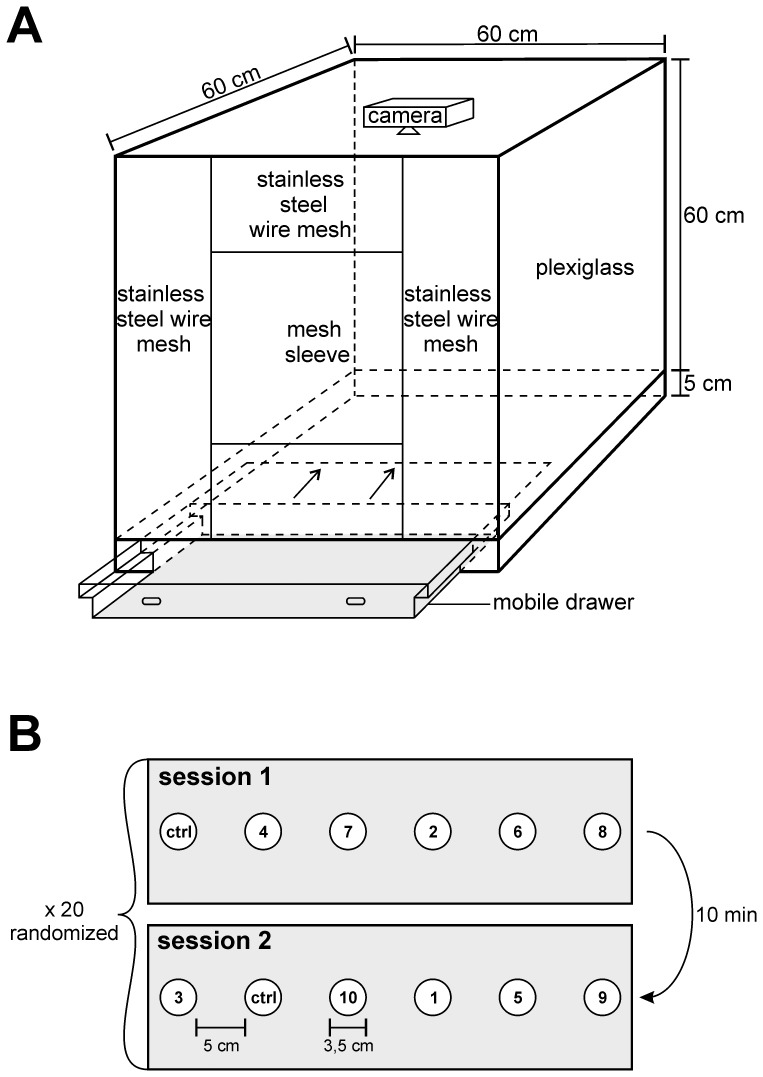Figure 1. Experimental setup.
A. Schematic drawing of the cubic wooden cage (60×60×60 cm) used for the experiments. The front part was equipped with a mesh sleeve for introducing hornets into the cage. The base contained a 5 cm deep mobile drawer (in grey) and a stainless steel plate used to securely deliver tested stimuli. Inside the cage and attached to the roof, a digital camcorder allowed the recording of hornets’ behavior. B. Experimental procedure used in the first experiment. Each of the 20 replications was divided in 2 consecutive sessions separated by a 10 minute interval. Within a session, 5 stimuli among the 10 tested (numbered circles) were placed 5 cm apart in the mobile drawer, and delivered together with a control (ctrl circle). The sequence of stimuli presentation and exact location in the drawer were fully randomized. The second experiment was similarly designed but contained 4 sessions of 5 stimuli among the 20 tested.

